This story is part of CES 2016. Our editors bring you complete CES 2016 coverage and scour the showroom floor for the hottest new tech gadgets around.
I’ve been in refugee camps, been on Mars, glided through prehistoric aquariums and attempted to watch live debate coverage. I’ve walked across footbridges on Everest, painted in the air with glowing light, and shot virtual slingshots. But 2016 is coming, and you and I haven’t seen anything yet.
Virtual reality’s big debut is circled in red: the new year, 2016. Systems that have been teased and demoed for years are finally arriving. Software will be released. And tech companies everywhere are ready to scream out that VR has, indeed, arrived.Not all virtual-reality products and experiences will be successful, or even good. But a lot of it could be astonishing, and most of it will still be fascinating to experience…if you can afford it. Are you ready? Here’s what to expect in 2016.
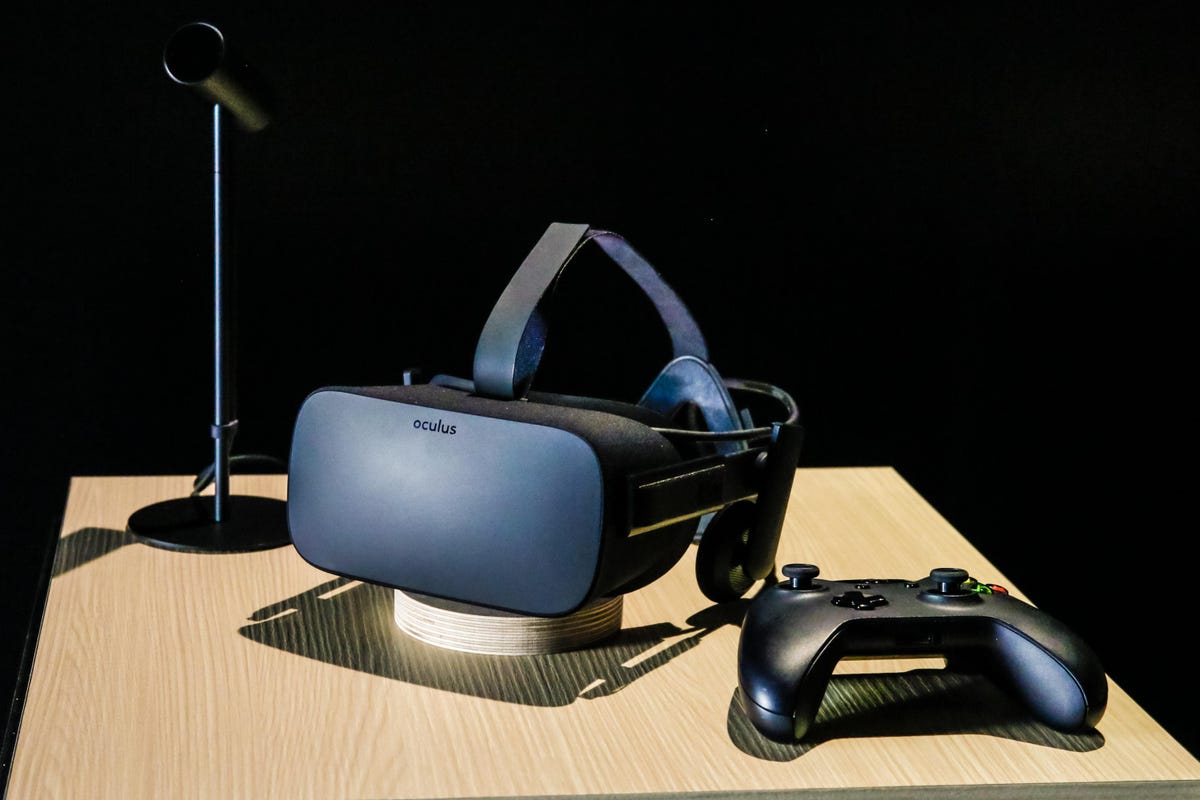

Oculus Rift, a PC-connected VR system coming very soon.
CNET
Oculus Rift, Vive, PlayStation VR: The big rigs finally arrive
Oculus Rift, the big, game-playing showcase technology that Oculus has been building for over three years, debuts early 2016. So does HTC Vive, a competing product. Both run of high-end PCs with powerful graphics cards. Meanwhile, PlayStation VR is preparing to emerge around the same time, running off of a PlayStation 4.
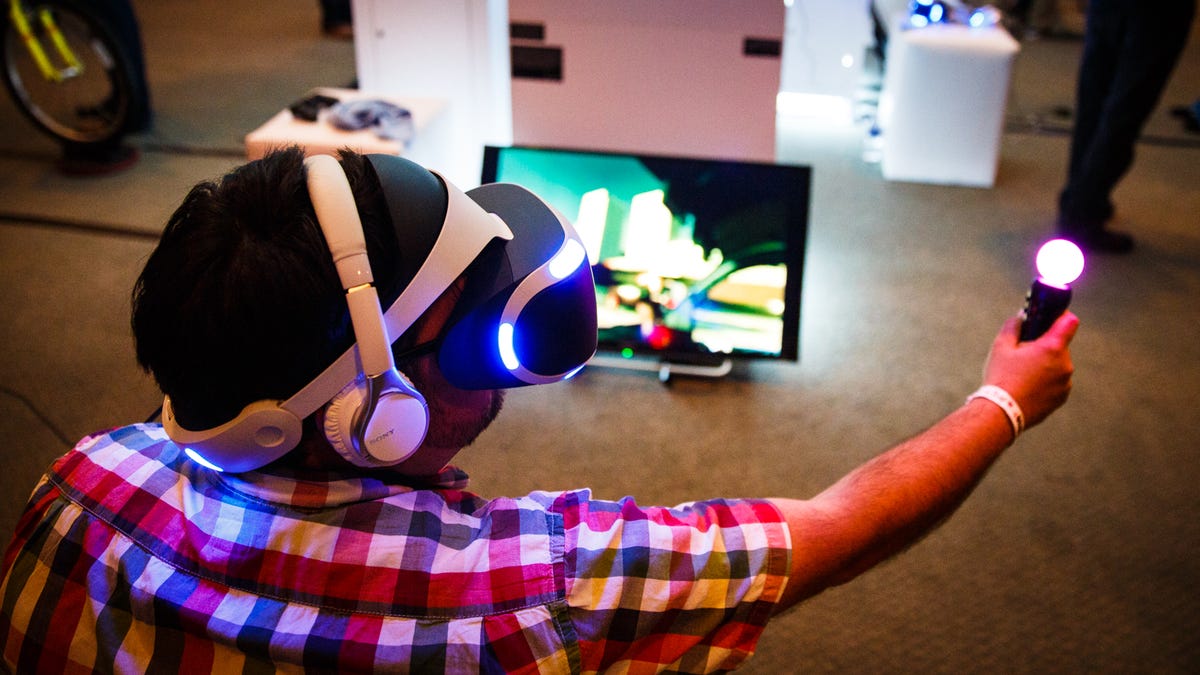

PlayStation VR works with the PS4.
Josh Miller/CNET
Sound like a crowded space? It should be. But these systems aren’t for everyone. You will need a PS4 or a fairly muscular Windows PC. And these higher-end systems, while amazing to experience, are a bit higher-maintenance than mobile VR is. All of them are tethered: you need to run a cable from the headset to your console or PC.
They also need cameras or room sensors that offer additional spatial mapping (not unlike the Xbox One’s Kinect Sensor). They all have custom controllers, too, that help enable the feeling of really being in virtual worlds: PlayStation Move motion controllers, magic wands made by Valve, or hand-enclosing controller-gloves that let you reach for imaginary objects.
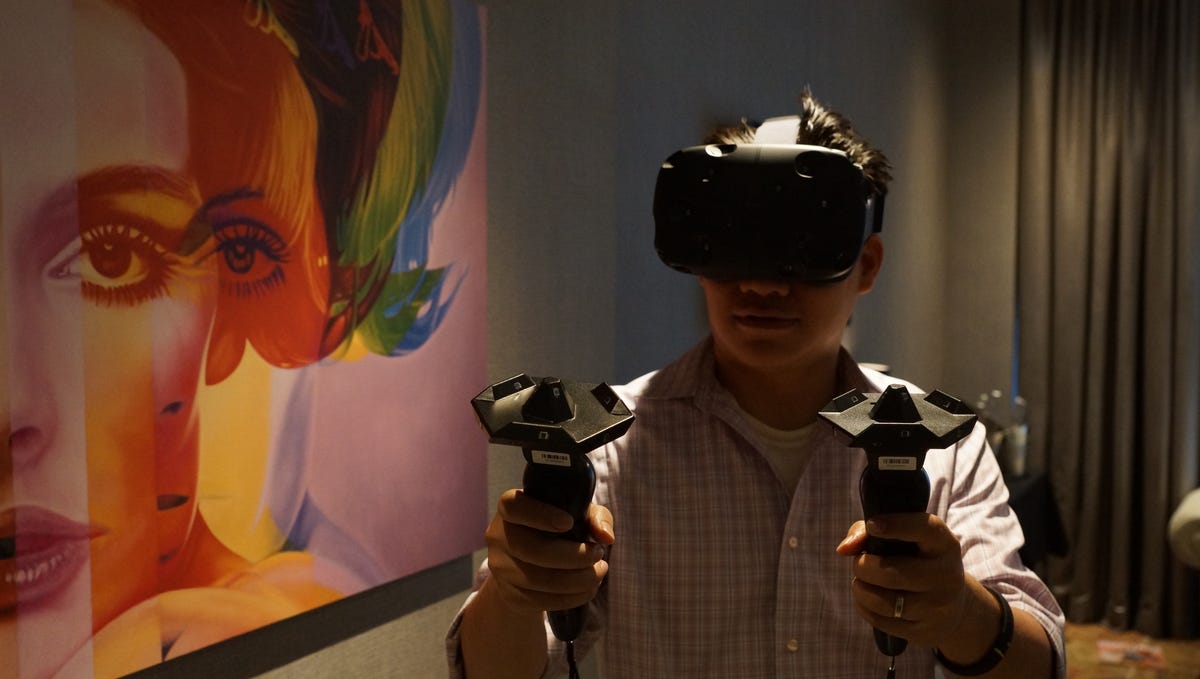

HTC Vive has its own controllers and full-room sensors.
Nigel Manuel/CNET
You’ll also be able to use standard game controllers, too, but where’s the fun in that? These systems won’t be cheap, and they’ll offer a lot more excitement in exchange for more equipment. I’ve gotten a chance to try them all, and what they offer is astounding…but I wonder how many people will put up with the amount of equipment that will be necessary.
Hey, mom, I’m in VR! — shoot-it-yourself camera rigs and apps
There are two flavors of VR content, for the most part: games and apps that use graphics to create immersive worlds, and 360-degree panoramic videos and pictures — sometimes in 3D — shot with specialty cameras and editing software hoping to create a cinematic virtual reality.
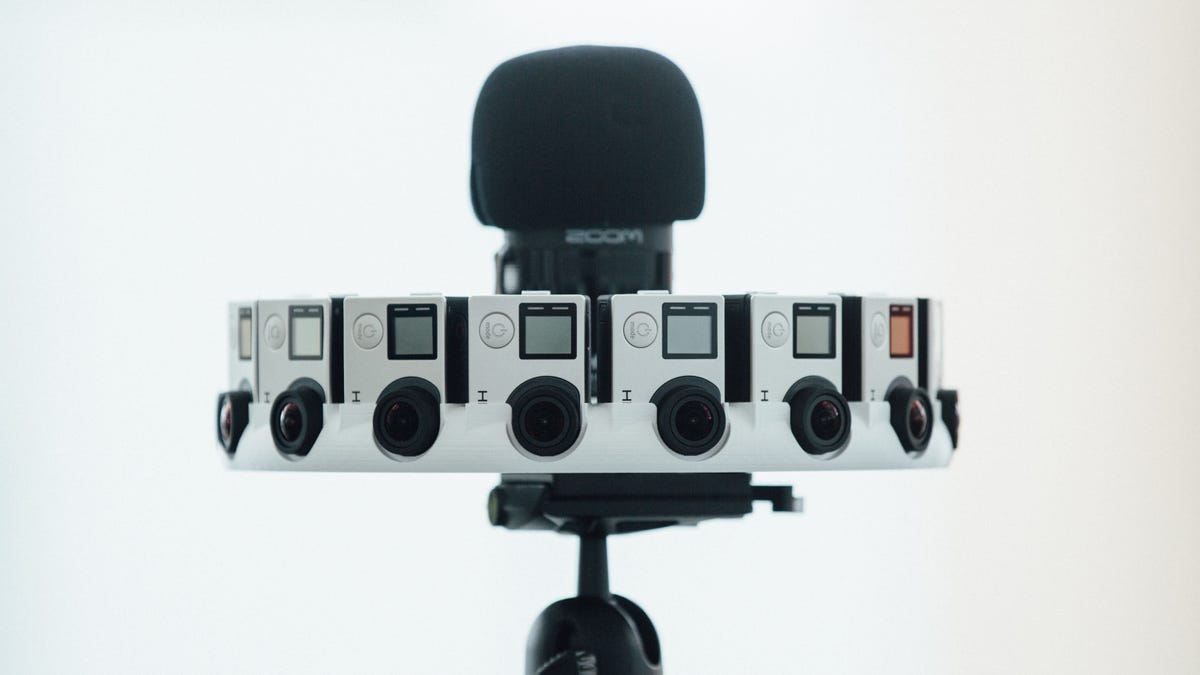

JumpVR: a ring of GoPro cameras for shooting 360-degree videos.
James Martin/CNET
360-degree video doesn’t need to be seen with a VR helmet — many apps like YouTube and VRSE allow anyone to hold their phone or tablet up at arms’ length and spin around to see 360-degree videos on the fly. But some VR filmmakers are getting really good at making wonderfully immersive movies that can be seen on a wide variety of platforms, mobile or tethered. Access to these specialty cameras has been limited, but more camera-makers will focus on solutions for professionals and amateurs. YouTube won’t be the only place where these videos will be uploaded — I’d expect a lot of companies trying to offer apps or ways to share 360-degree video, and to partner with the bigger platforms in VR to ensure compatibility.
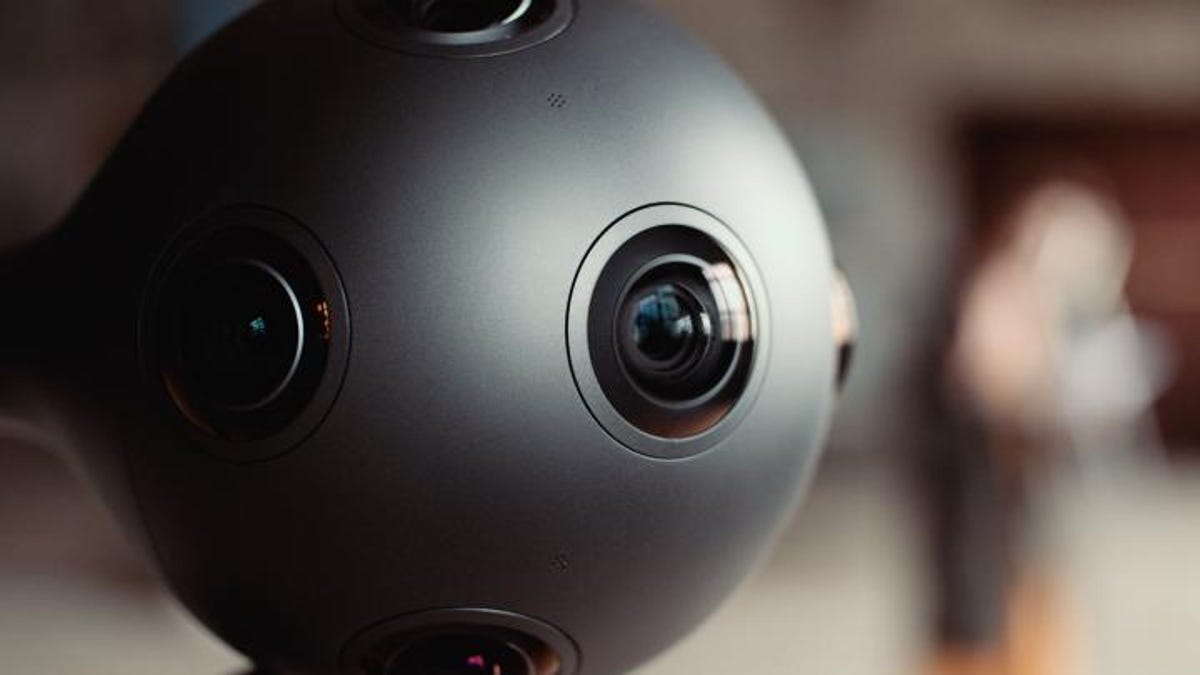

Nokia’s Ozo, a professional-level camera for 360-degree video and spatial audio.
Nokia
This year’s CES — the giant trade show in Las Vegas during the first week of January that sets the agenda for the year in tech — should be full of companies looking to hawk 360-degree video cameras (spherical cameras, as they’re called). Others will try to cobble together software solutions. These are the beginning days of telepresence. It won’t be hard, soon enough, for someone to stream their life in 360 degrees…and have you follow along live.
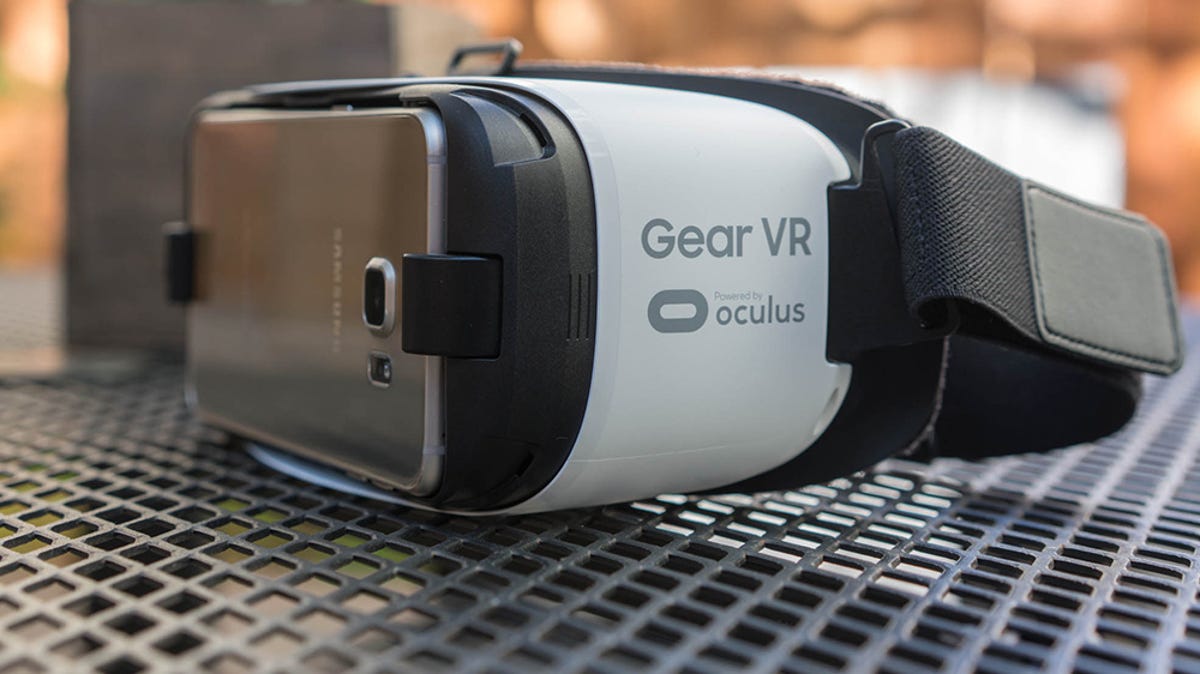

Samsung Gear VR requires certain Samsung phones.
CNET
Mobile VR is already here, and will grow fast
Samsung Gear VR was the first VR headset that Oculus, acquired by Facebook, actually launched. It’s surprisingly good, and yet it’s really just a very well-designed $100 headset accessory that runs off a phone, which acts as the 3D screen. That experience — mobile, simple, and impressively visceral — will define virtual reality for a while. It’s low-priced, and easy to use. It’s only real downside is that it only works with a handful of Samsung Galaxy phones.
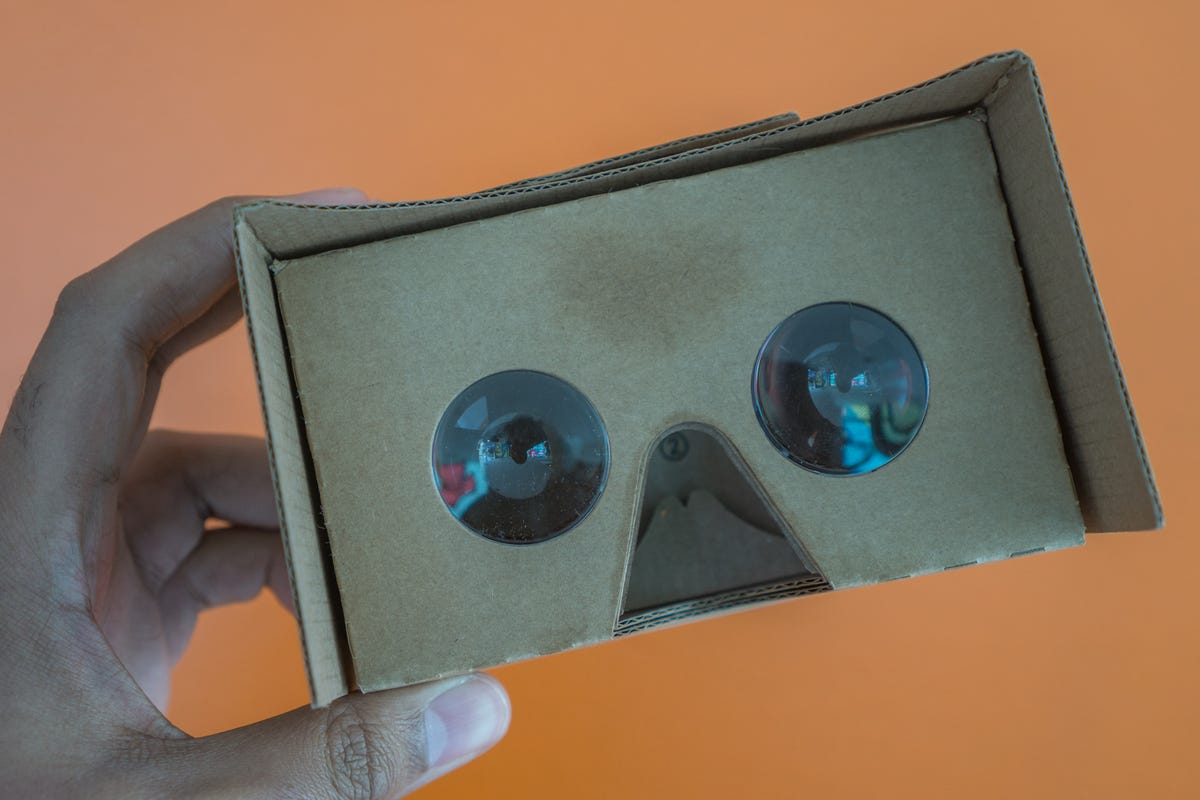

Google Cardboard: Cheap, easy, works with most phones.
CNET
The other big mobile VR platform, Google Cardboard, has no such single-brand limitation. Cardboard — so named because it’s mostly a light cardboard headset cradle — works with a wide variety of everyday iPhone and Android smartphones. And while most of the apps and experiences are more akin to 360-degree immersive videos than the sophisticated games you can find on Gear VR, it’s a great gateway drug for VR experience. Even better, Cardboard viewers are generally available for under $20.
Most people have never used any VR at all, so both Gear VR and Google Cardboard have their work cut out for them. Gear VR price drops (it’s half the price now than it was earlier this year) and Google Cardboard giveaways (New York Times, Verizon and others have already handed them out liberally as free giveaways) will try to put this tech into as many hands as possible. Already, it has a knack for astonishing newcomers.
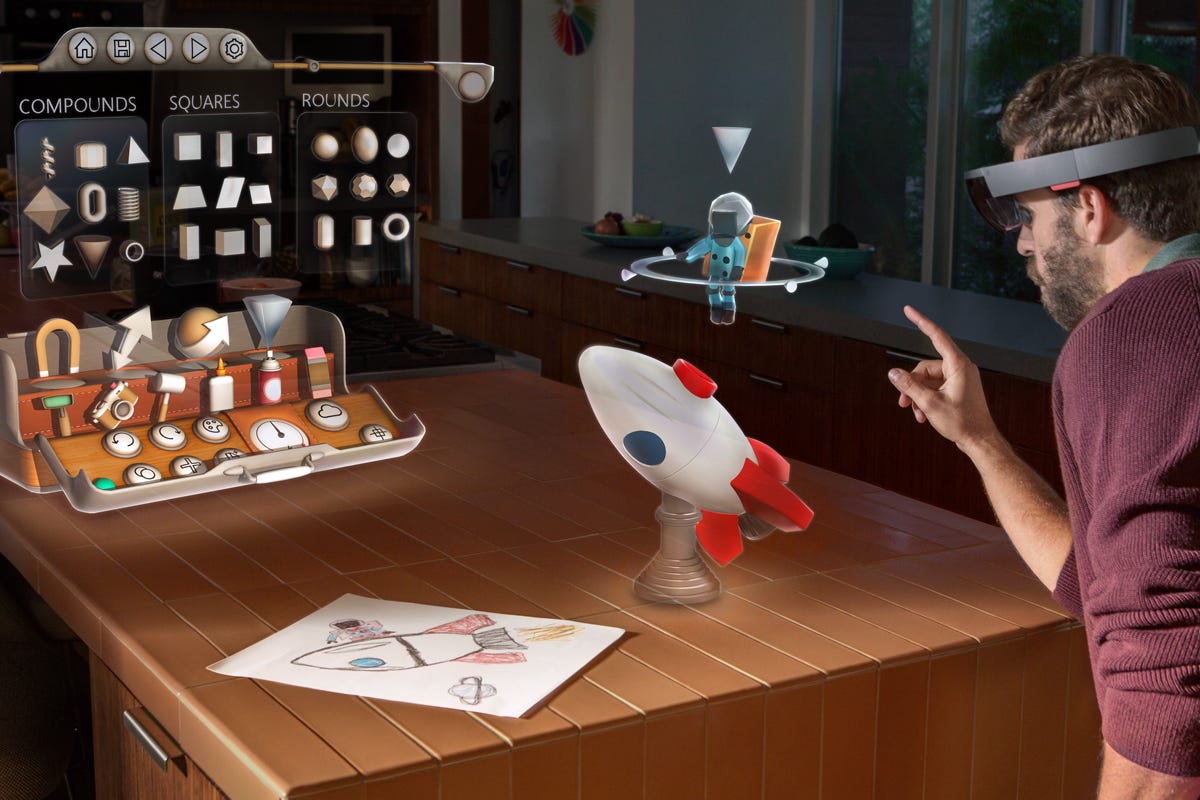

Microsoft’s depiction of using the HoloLens. In reality, it feels a bit different.
Microsoft
Augmented reality and mixed reality: VR’s push into our everyday world
A solar system in your living room. An elephant in your hand. Minecraft on your coffee table. The strange and wonderful promises of augmented reality, or “mixed reality,” are another step beyond what VR offers. Microsoft HoloLens is the most prominent example to date: a helmet with transparent lenses that projects the illusion of 3D objects into the regular world, using depth-sensing cameras to position everything perfectly. HoloLens can sense your hands, too, to allow air-clicking and manipulation of virtual objects without a controller.
Microsoft’s HoloLens developer-edition kit will arrive early next year for $3,000 — this is far from consumer tech yet, and its limitations are greater than those of VR. But the simultaneous push of augmented reality will keep happening throughout 2016. The most notable unknown quantity here is Magic Leap, a mysterious Florida company with Google funding, working on a still-unseen product boasting unparalleled augmented-reality fidelity. We can’t judge what we haven’t seen.
Most anticipated tech of 2016: August to December edition






New ideas, and mysteries to come
If you (or I) think we know everything there is to know about virtual worlds, I think we’re sadly mistaken. Even the technology listed above is just the tip of a potential iceberg of peripherals and technological concepts. At shows like CES in Las Vegas, hungry developers and newcomers are bound to try out new ideas — some possibly successful, many not.
VR needs new peripherals to enhance the sense of another reality: for now, it’s room-sensing cameras and motion controllers with haptic (vibrating) feedback. But what about full-body suits, or 3D cameras that can scan your hands and put them in VR, too? We’ve seen glimpses of this tech already, but 2016 is a year where new ideas for what VR can mean will start to blossom everywhere…especially since the key hardware platforms will at last be available to everyone. It’ll be amazing. It’ll be a mess.
I can’t wait to go along for the ride, but I’m resting my eyes in advance.



